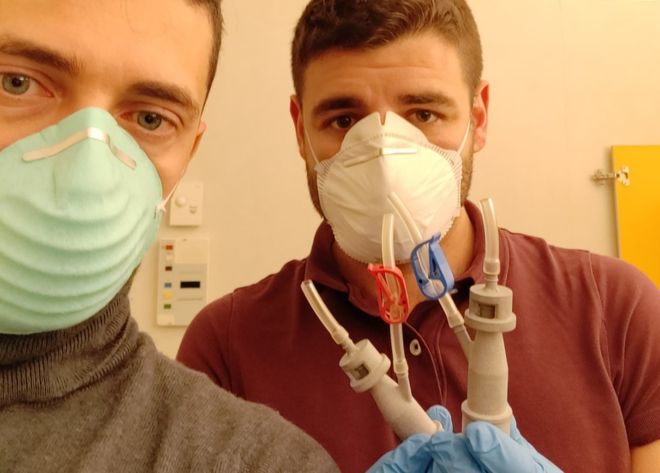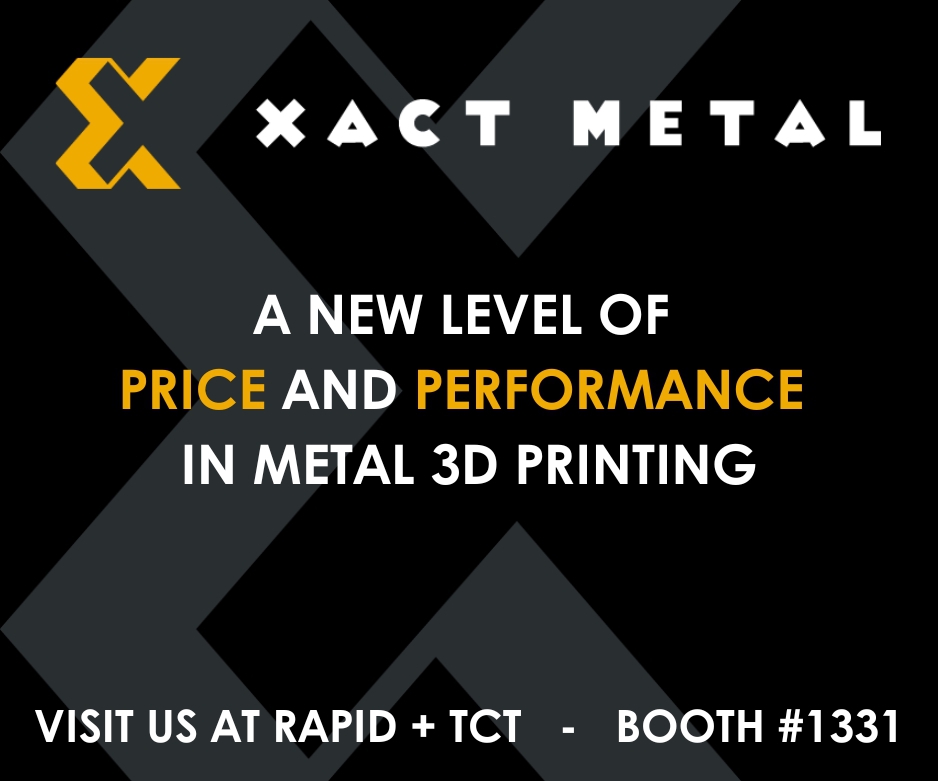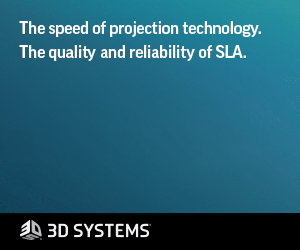Rescuing the Additive Industry: The Straight Edge 3D Printing Manifesto
Things have not been going well in the 3D printing industry for a long time. Much has been written on this topic and the reasons for this situation have been quite well defined and diagnosed. However, it seems to me that everyone has missed something quite important, which can be described in the following statement:
Companies in the 3D printing market fail because they try to be something other than what they are and have always been.
I expand on this idea below. But before I go further, I would like to present the solution right away. 3D printing must return to what it was, to what made it a disruptive technology. 3D printing must become straight edge, a philosophy traditionally associated with curbing excess. However, when it comes to additive manufacturing (AM), instead of prohibition, the industry should adopt the following principals:
- Be true
- Be different
- Share and spread
If you don’t agree with this idea, just keep doing what you’re doing now: burn the cash, lose your value, and struggle to survive.
How it Started
3D printing was invented by engineers, inventors, entrepreneurs—in short, by professionals. Chuck Hull, Carl Deckard, Scott Crump, Hans Langer, Emanuel Sachs, Fried Vancraen and several others created all of today’s most important AM techniques and founded the first companies that established the market. At the same time—as befits professionals—they took care of their own interests. They patented what they came up with, securing themselves for the coming years to peacefully develop machines, materials, and software.
This strategy was clever, but it had one big drawback: in the 90s and 00s, few people had heard about this whole AM thing. It was a very specific and niche industrial technology. Yes, 3D printers, materials, and software were selling. Some companies were even good enough to be listed on stock exchanges. But in terms of the entire manufacturing industry, AM was plankton. It was tiny.
How it Exploded
We all agreed that 3D printing was invented by Chuck Hull. He is the creator and the father of the industry. Without him, none of this would exist. Not to take anything away from his achievements, but, if you read a little, you’ll discover that, in fact, he was not the first in the strict sense. He was the first to patent and implement the technology. However, he was not alone in this. All of those mentioned above (Deckard, Crump, etc.) had a key impact on the development of technology and the industry. Unfortunately, when we talk about inventors of the 3D printing industry, we often miss one name. A name that actually took 3D printing to new heights: Adrian Bowyer, creator of the self-replicating 3D printer, the RepRap.

Adrian Bowyer, left, showing off a RepRap and its clone.
What was an interesting academic project soon became the spearhead of change that shifted the image of industrial production. Young people became interested in Bowyer’s work and saw its incredible creative potential (creative, not business potential). Zach “Hoeken” Smith, Adam Mayer, Bre Pettis, Josef Průša, Martijn Elserman, Erik de Bruijn, Siert Wijnia, Brook Drumm and many others began to develop upon Bowyer’s design, refining it and promoting it around the world.
In just two to three years, the global RepRap community did more to popularize 3D printing than 3D Systems, Stratasys, Materialise and EOS did in 20 years. 3D printers were no longer just niche, industrial machines. They had become a home-based production facilities. New terms were coined: “distributed manufacturing”, “democratization of production”, “bridge manufacturing”. In the past, to start producing things, you needed a workshop or an industrial facility. A lot of money for machines, material, tools, and qualified specialists. Thanks to 3D printers developed by MakerBot, Prusa Research, Ultimaker and Zortrax, anyone could start production in the machin eshop or bedroom. Which they did.
Unfortunately, big money soon followed…
How it Withered
The temptation became too big. It wasn’t about not raising money for development and building the value of the company. It was about remaining true to oneself. Bre Pettis was the first to turn away from the maker movement. After removing Zach “Hoeken” Smith from view, MakerBot transformed into a “startup corporation.” It stopped maintaining an open-source philosophy and started patenting (sometimes not necessarily its own solutions). When it was absorbed by Stratasys, it became a caricature of itself. Pettis paid the price for this. Today, few people remember him, and comparisons to Steve Jobs in the past seem pitiful in retrospect.

MakerBot founders (left to right) Adam Mayer, Zach Smith and Bre Pettis with the final MakerBot Cupcake prototypes.
Ultimaker followed the same path. It used to be a wonderful company. In the years 2016-2019, I worked closely with the firm. Back then, it seemed that an open source approach and close cooperation with the community could be combined with large, professional business. However, it didn’t work. After the COVID-19 pandemic, Ultimaker also became a caricature of itself. Until, finally, when there was no other idea for what to do next, the Ultimaker caricature merged with the MakerBot caricature, creating the essence of 3D printing cartoon: UltiMaker. Forget about open-source. Forget about the community that got you here. Forget about being real.
Other startups followed the same path. They received funding, took onboard investment angels, venture capital funds and managers recommended by those angels who were then allowed them to run those companies. They began to operate according to the old corporate principle: “FASTER – HARDER – HIGHER”. Then, like Icarus, they flew towards the sun, only to lose their wings and fall into the abyss of death. More companies have gone bankrupt than are still in existence.
After the desktop 3D printing fiasco, industrial startups have appeared in their place. 3D printing was no longer called 3D printing, it became “Additive Manufacturing.” High-tech (light-cured resins, polymer and metal powders) meant higher budgets and higher subsidies. Most pursued the stock exchange debuts desired by venture capitals.
The effect? The same. Everything has been going downhill for over a year now. Nobody knows how to stop it. Will it end and when? I don’t know either, but I know why it happened. We all have ourselves to blame. We tried to be someone else. We tried to be like “the real manufacturing industry.” Meanwhile, 3D printing is specific. Different.
What Is 3D Printing Anyway?
According to the definition: 3D printing is a manufacturing method that involves applying material layer by layer and selectively bonding the material together. Compared to all other production techniques, it has three advantages and three disadvantages that significantly interact with each other:
Advantages:
- It is the fastest
- It is the cheapest
- It allows the production of geometries that would be impossible to make otherwise
Disadvantages:
- It has the poorest accuracy and finishing quality
- It becomes problematic as part sizes increase
- It is not profitable for mass production.
When do we use 3D printing? When we need to produce one or several items. When we want something done quickly and cheaply, and quality is of secondary importance. When we come up with something so specific, unusual, and complicated that only a 3D printer is able to make it.
Let’s summarize:
- low quantities
- very specific
- cheap
- quality is not the most important thing.
AM cannot be compared to injection molding, nor CNC milling. So, you can’t have the same business expectations for 3D printers as you do for injection molding lines, right? Well, venture capital funds do. That’s why they invested so much money to make the industry grow just as big, right? But that approach couldn’t have worked from the very beginning. This expectation was contrary to the essence of 3D printing.
A Brief Display of Potential Power
In March 2022, the COVID-19 pandemic spread across the world. It was a terrible time. But that’s when consumer 3D printing took to the stage and demonstrated its true power. First, an Italian company, Isinnova, created replicas of ventilator valves that rescued patients at hospitals in Milan. Then, Josef Průša presented 3D printable protective shield project for emergency workers. In other countries, innovators created still more projects.

The Isinnova team with 3D printed oxygen mask valves. Image courtesy of Isinnova.
All designs were provided for free. Everyone started 3D printing them and, in most cases, giving them to medical services free of charge. Everything happened naturally and spontaneously, instantly all over the world. Full-scale distributed manufacturing. Although it may seem funny today, protective shields were even 3D printed in the Andrzej Duda, the President of Poland, in his own palace.
Importantly, these projects took full advantage of all the benefits of 3D printing, without the disadvantages:
- it was fast
- it was cheap (or even free)
- the geometries of some parts were difficult and demanding
- Quality didn’t matter that much, it just had to work
- Most of the parts were small
- Production did not take place locally in a single location, but across entire cities, countries, and continents; distributed manufacturing can be performed en mass.
The pandemic ended as suddenly as it began and the above action also naturally ended. But the memory remained. What if we went back to this concept, but under normal circumstances?
Back to the Basics
To get out of the crisis the industry is in, we need to go back to the beginning: understand what was the foundation of the industry’s success and what caused it to get into its current problems. Swallow some bitter medicine. Let go of the ego.
3D printing is a relatively small, simple and cheap manufacturing technology. It should not compete with other methods that have been on the market forever. Find your niche. Come to terms with your role. Don’t try to be someone other than who you are. But actively seek unique opportunities suited to you at every moment. Make the difference.
The Straight Edge 3D Printing Manifesto
What is “straight edge”? The straight edge movement is defined as the following:
“Straight Edge (sXe) is a subculture that originated from the hardcore punk movement in the United States in the 1980s. The main assumptions of straight edge are abstinence from stimulants such as alcohol, cigarettes, and drugs, and often also avoiding casual sex. Some people who identify as straight edge may also avoid caffeine and other stimulants and follow a vegetarian or vegan diet.”
What does “straight edge” mean on a deeper level? It means full control over yourself and the ability to resist temptations that are not beneficial to you or consistent with you nature. A consequence of such a philosophy: freedom.
“How can you be free if you can’t drink, smoke, or take drugs?” one might ask. A truly free person is one who frees themselves from the lure of false saviors and remains in harmony with oneself. We do things that are good for us in an absolute sense, not things that give us a sense of temporary comfort.
How does this relate to 3D printing? I’ll modify the philosophy of the straight edge movement and, instead of prohibiting certain activities, I call on you to:
- be true – do not try to be someone you are not and will never be; don’t lie, don’t prove that “you can make anything with a 3D printer”
- be different – use all of the advantages that the technology offers and go where no one else goes
- share and spread – for 20 years, no one was interested in 3D printing because it was sealed with patents; it spread worldwide when it was opened to all; the more closed the technology is, the fewer people will use it; it’s not about doing things for free. Sell them, but let people develop it free.
Go beyond yourself. Don’t lie to the world by trying to position yourself as a company you have no chance of becoming. Not because you are too weak, but the solutions you offer are so different and specific from the so-called “mainstream” that they simply will not work by definition. Instead of looking for money for development, start selling. Produce and sell not what is cool and “disruptive”, but what people actually need. Let disadvantages become advantages. The pandemic showed us how to do it. So, do it again.
Final Clarification:
I’m not a communist. I’m not an anarchist. I don’t live in a squat. I have a wife and two children. I have been running a 3D printing business for 11 years. I just observe, analyze, and draw conclusions. I see the industry is in bad shape. I’m trying to help. Maybe my ideas aren’t good enough, but those currently implemented by others don’t work either. So, let’s try to do things differently, maybe. After all, it can’t get any worse.
Subscribe to Our Email Newsletter
Stay up-to-date on all the latest news from the 3D printing industry and receive information and offers from third party vendors.
You May Also Like
Powering the Future: EOS’s Fabian Alefeld on Additive Manufacturing
In the world of 3D printing, innovation is a constant. However, the industry faces a complex landscape marked by opportunities and challenges. In 2023, the global 3D printing market totaled...
3D Printing Webinar and Event Roundup: May 26, 2024
In the weekly 3D Printing Webinar and Event Roundup, ASTM’s AMCOE concludes its professional certificate course, while Solid Print3D will offer a masterclass on Form 4 materials. If you’re in...
ISRO Successfully Tests 3D-Printed Liquid Rocket Engine for 665 Seconds
On May 9, 2024, the Indian Space Research Organization (ISRO) successfully conducted a long-duration hot test of a 3D printed liquid rocket engine. The tested engine, known as PS4, is...
Printing Money Episode 17: Recent 3D Printing Deals, with Alex Kingsbury
Printing Money is back with Episode 17! Our host, NewCap Partners‘ Danny Piper, is joined by Alex Kingsbury for this episode, so you can prepare yourself for smart coverage laced...



































